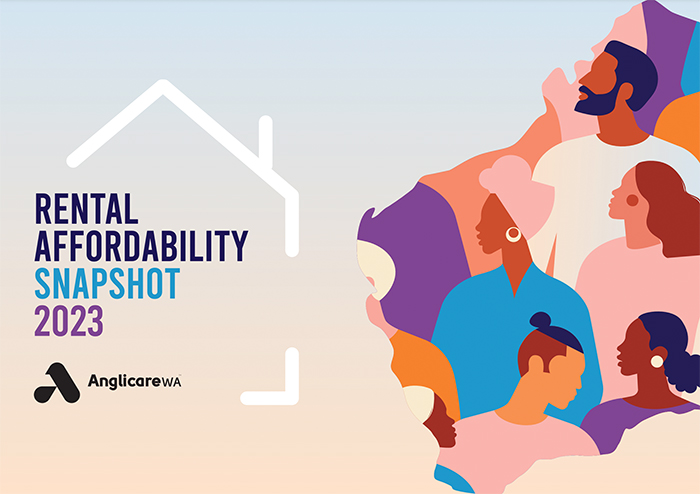
Download our full pdf report here
Sign up to receive future reports here.
Anglicare WA conducts the Rental Affordability Snapshot each year to develop a better understanding of how our rental market is changing and the implications for Western Australians living on low incomes.
The 2023 Snapshot highlights the lack of affordable options for low-income households, particularly for people who rely on government benefits and, increasingly, those on the minimum wage experiencing in-work poverty.
In previous years, the Snapshot included three regions: Perth Metro; South West and Great Southern; and North West including Kimberley and Pilbara. This year, the Snapshot includes two more regions: Mid West and Gascoyne; and Wheatbelt and Goldfields to cover the whole state.
This year’s Snapshot shows the number of affordable and appropriate homes for rent for people on low incomes on 17/18 March 2023. 1
A property is considered affordable if it required less than 30% of a household’s income. Paying rent of more than 30% of income puts the renter in housing stress and more than 50% is considered severe housing stress.
A rental is considered appropriate if it has an adequate number of bedrooms. 2
Key findings
• 0% of properties were affordable for a single person on JobSeeker.
• 1% of available properties were affordable for people on other income support payments.
• There were 2,912 private rentals available in WA.
• Available rentals dropped 16% compared to 2022.
• The WA median was $560 per week, well out of reach for most households on income support or minimum wage.
The private rental market continues to fail households on low-incomes and increasingly, minimum wage earners.
Low-income households are priced out of the private rental market across the state, paying a substantial proportion of their income in rent or living in various forms of homelessness like sleeping rough, couch surfing or severe overcrowding.
Many of the properties at the lower end of the market were for a room in a share house. Even renting a room in shared accommodation was unaffordable for many on benefits, with rents ranging from $190 to $285 pw.
The other type of accommodation that was available at lower rates were due to the National Rental Affordability Scheme (NRAS) where governments subsidise landlords, and in exchange those landlords offer their properties at below market rents to income eligible tenants. NRAS has been successful in providing an incentive to owners to offer their properties at below market rates, however NRAS is coming to an end, and will likely result in rent increases for those properties once they are no longer under the scheme.
Tenants are being forced to stretch themselves even further as leases expire and prices rise, or risk entering the open market in search of a cheaper dwelling, which may not materialise.
Outlook for WA renters
The general outlook is not positive for low-income renters. For those relying on inadequate income support, we need a better response from government. And while a tightening labour market is seeing more people working at least some hours, this is not yet translating into significant wage increases.
While the costs of living increase, we see a growing cohort of people experiencing in-work poverty as insecure and casualised jobs dominate and there are fewer full-time low skill and entry levels jobs.
1 Listings are from realestate.com.au
2 Based on basic occupancy standards.
For example, a studio apartment would not
be suitable for a family of four.
 1300 11 44 46
1300 11 44 46


 Search
Search